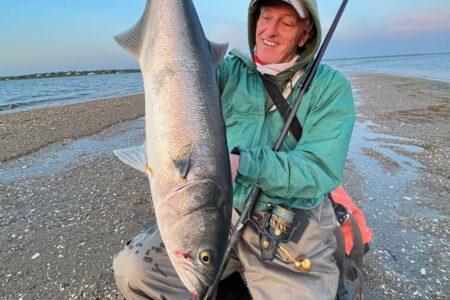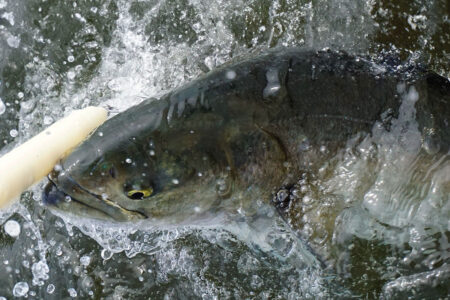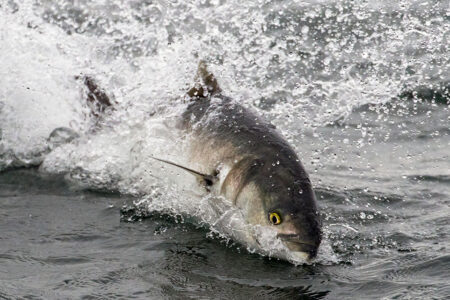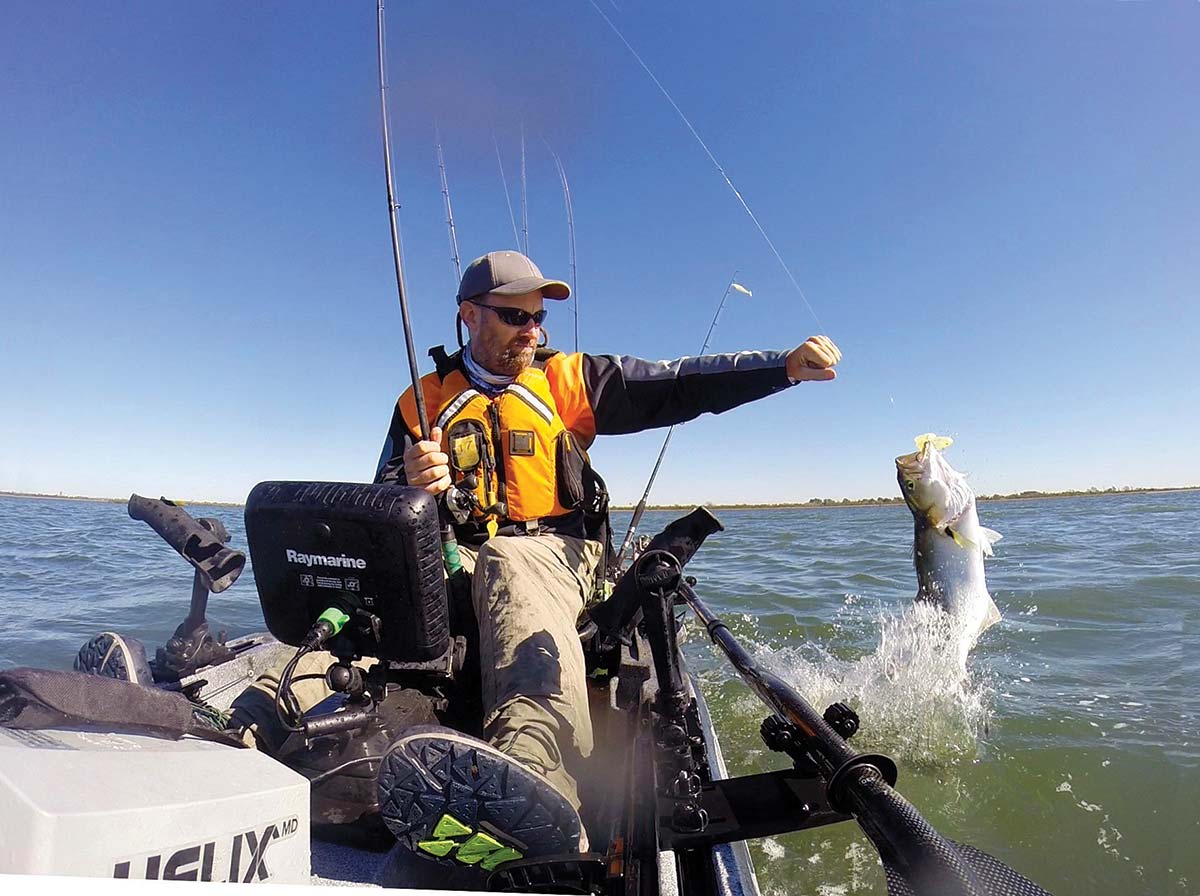
What you need to know about kayak angling for spring bluefish.
Targeting the first bluefish of the season can be an intense and extremely enjoyable experience for a kayak angler. Most of these bluefish are large and measure in the 25 to 35-inch range. These blues are shaped like racers and are often skinny after experiencing a winter offshore with limited forage. As a result, these bluefish are aggressive and will feed heavily, immediately after moving inshore. In addition to providing a powerful fight, these bluefish will challenge a kayak angler’s ability to understand logistics and planning. The key to success is combining speed with an organized and thoughtful approach that will ensure that you can cover a substantial amount of water in trolling and casting distance while being able to quickly fight and unhook some of the biggest bluefish that you will encounter all season.
Timing Is Everything
After a few weeks of early-season inshore striped bass action, fishermen are confronted with hordes of bluefish invading the region, all seemingly converging inshore at the same time. This event usually occurs like clockwork from April through May and brings good fortune to kayak anglers with some of the best light-tackle action of the season for big bluefish. These gators move inshore with a vengeance across the bays, flats and harbors. This pattern is triggered by the last lunar period of the month and almost always occurs suddenly unlike the piecemeal appearance of many of our other local species. In fact, anglers will often be surprised that waters that appeared to be lifeless one day will be teeming with large bluefish the next. For this reason, it is always good to be cognizant of the arrival of bluefish and plan your kayaking trips for striped bass accordingly by including some hard baits and metal lures to your arsenal on late-April to May trips. These fish will bite at both sides of the tide but incoming is often better for the spring gators.
Remember when choosing to use the kayak for this type of fishing, you should prepare properly by wearing the proper PFD and a dry suit since the water is at a colder temperature still.
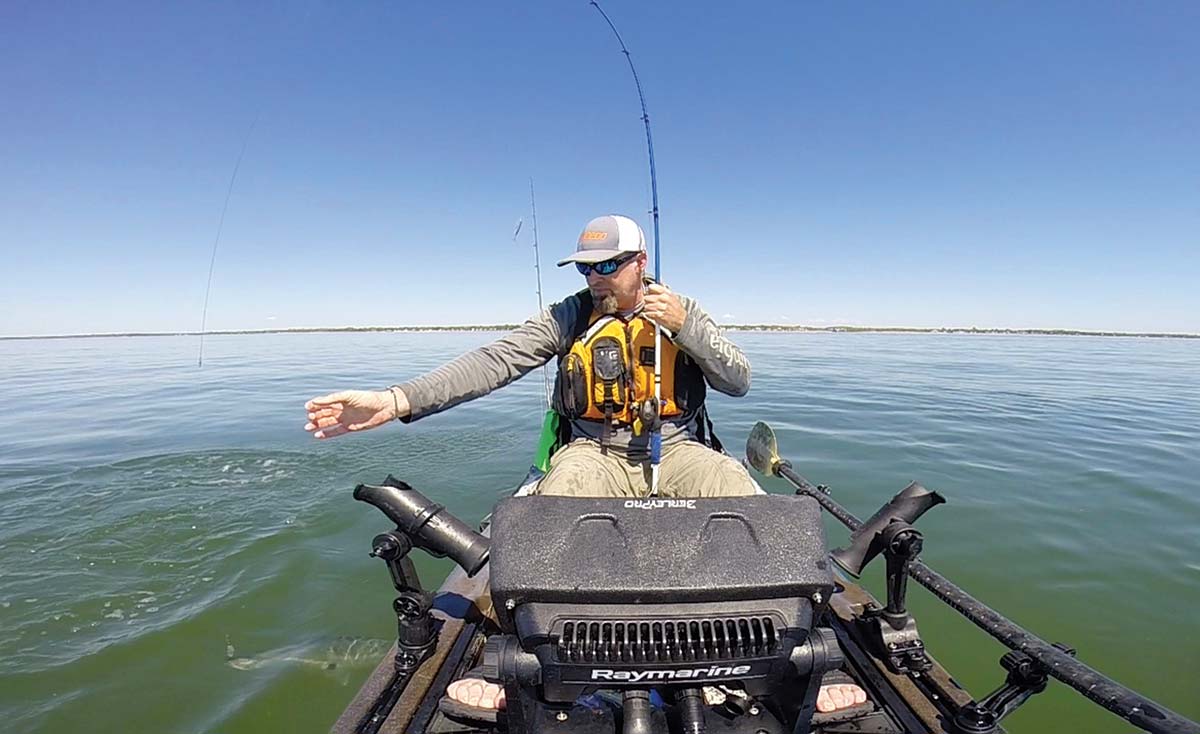
Location
Sometimes bluefish will appear to be everywhere while other times you will have to search for them. Because of this, trolling becomes an important tool in locating schools of bluefish. It is extremely useful to have the ability to work hands-free with a peddle-driven or motorized kayak because you will sometimes need to cover some distance to find schools of fish.
Focus your efforts on the backwaters of the region. Specifically, the bays and harbors are historically prime areas for finding big early season bluefish. The meat of the sandwich would include all of the inshore waters where the gators would go to fatten up after a long winter offshore. These middle fisheries generally contain smaller bluefish but you can definitely expect lock-and-load fishing for plenty of cocktail bluefish in these areas too beginning at least in early May.
Although all of these inshore locations will contain blues, not all of these areas are created equally. As with all fishing, structure will dictate fish movement and location. Thus, channels and flats should be the focus of your attention. Although the bluefish will move through deep channels, they are more likely to be found feeding in shallower water on baitfish. The first place to look for bluefish at this time of year is on flats adjacent to deep channels as the tide floods. Moreover, shallow channels within the flats are often superhighways for bluefish and are an ideal area to find feeding bluefish on the move. Once that you find a school, you can usually work it for the entire tide without moving very much. In addition, look to cuts and other areas adjacent to sandbars, which also often funnel both prey and predator.
On good days, you can locate bluefish simply by finding working birds over feeding fish.
On other days, you will need to look for them by covering water and utilizing sonar and GPS technology. The best way to locate a school is to shallow-troll the flats and focus your efforts on finding channels or holes. For this reason, a GPS system with a nautical chart is extremely helpful in creating a synergy between the kayak and the bottom contours. Navionics is a great application for this. The GPS system will show you the location of channels and holes and help to track your speed, which is another important factor to achieving success. Your sonar will confirm that you are working the proper depth.
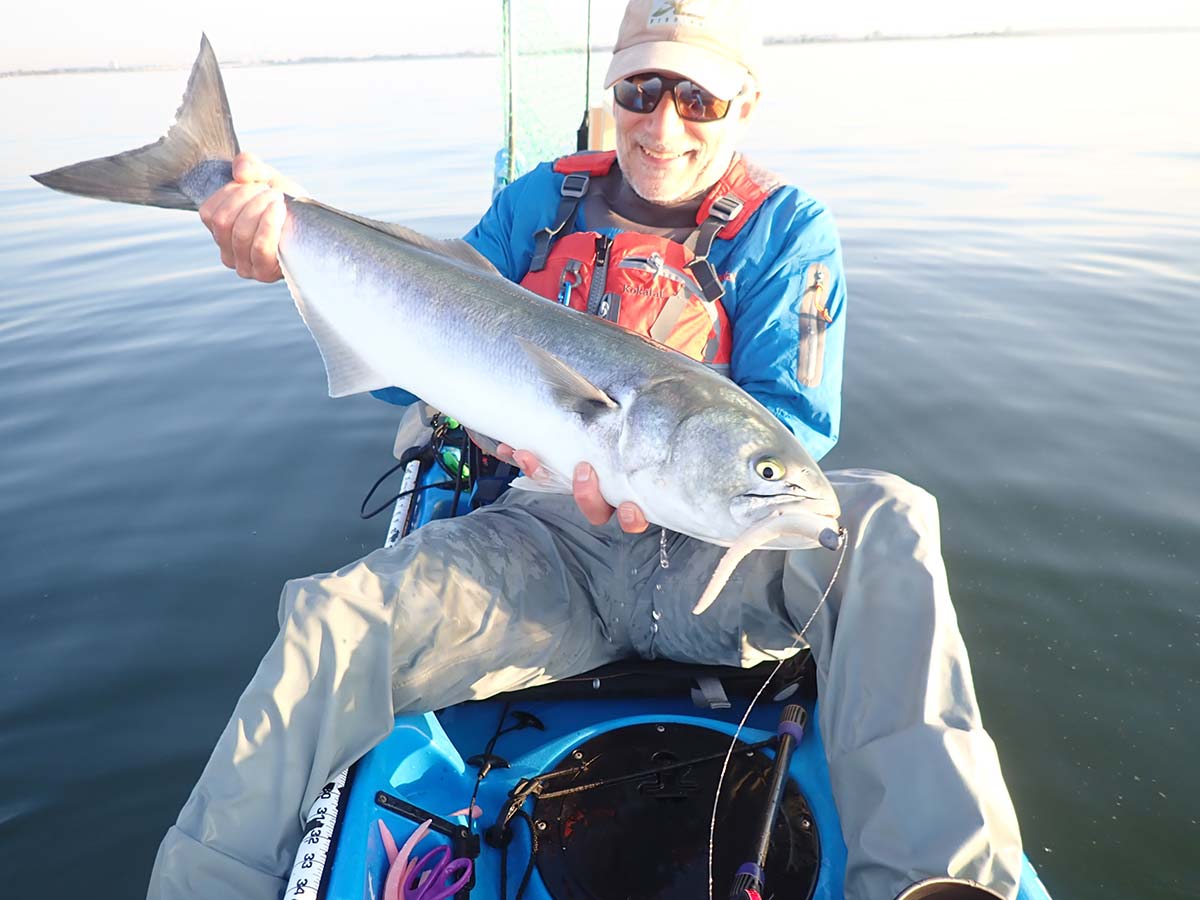
Yak Tackle
A fast action medium-heavy rod with a stiff tip and a reel in the 4000 to 5000 class is a good match for this type of fishing. The rod must be light enough to cast long distances but stiff enough to be able to effectively fight a 30-inch fish. The fast action will also help you to cast lighter lures in blustery conditions. The rod and reel combo should feel light because you will probably be doing a substantial amount of casting. A good setup is a St. Croix Inshore Mojo matched with a Shimano Stradic reel. Using lighter braid will help your casting distance but don’t go any lighter than 15 pound to avoid tangles and possible breakoffs. Remember, other bluefish will often swipe at the lure on a hooked fish and cut through the braid with its teeth. For this reason, it is probably better to use 20-pound braid if you expect the bluefish to be thick.
Check your leaders often when targeting blues. A checked off leader will snap at the worst times resulting in a lost fish and plug. To also make things easier on the kayak, using a longer leader and tying direct helps you main control of a fish. Grabbing hold of a leader will be cut your hand like braid would and also the longer leader will protect your braid from rogue blue swipes. A pair of gloves can also be your best friend when the blues are in town too. They make for better handling of a fish on a kayak.
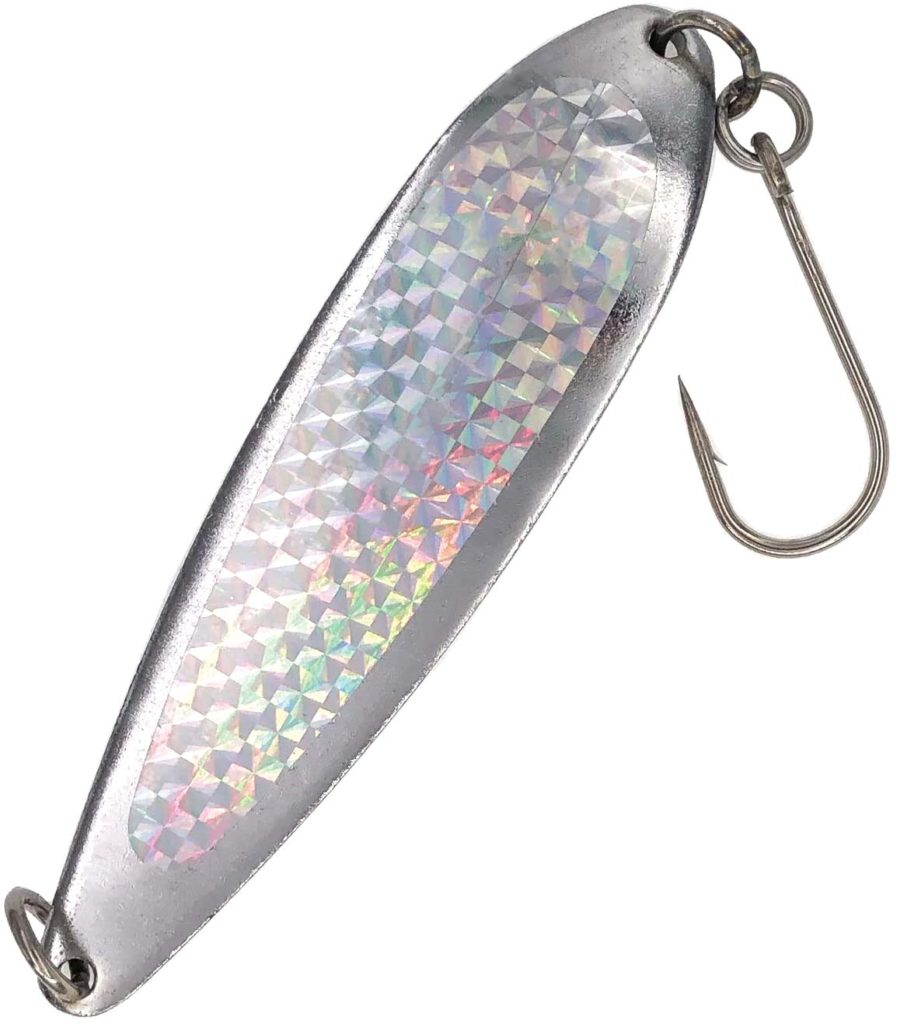
Lures And Presentation
This is run and gun fishing and these bluefish are not picky. Unlike other local fisheries, lure choice and fish preference may not matter as much as ease of use. Specifically, bluefish can be extremely difficult to handle on a kayak. Once that they are taken out of the water, bluefish will flail unpredictably and a treble hook can easily end up in your hand even if you are being careful (not to mention the possibility of a bad bite from these toothy fish). For this reason, I almost always use metal lures on bluefish instead of plugs. Although it has a treble hook, my personal favorite spoon is a Krocodile and burning this spoon through the flats often elicits rod-jarring strikes. If you can figure out a way to remove the treble on this spoon, I would highly recommend it.
Plugs are also great and will eek out more bluefish on a tougher bite but anglers should also consider modifying the hook setup a single hook or one treble while fishing from a kayak. I have always had great success using Yo-Zuri plugs on bluefish but, again, bluefish are not very particular while in feeding mode at this time of year. From a trolling perspective, make sure that your spoons and plugs run shallow. The best running depth is 2 to 3 feet. Lures that run this depth will stay in the strike zone and not get snagged on debris from the bottom. Spoons and plugs can be used for casting and trolling. Topwater plugs will yield some heart-thumping hits but the same hook modifications should be considered.
Another great option for trolling is a Tube and Worm. The greatest benefit of the Tube and Worm is ease of use due to the single hook that allows easy and quick release. The biggest drawback is that you will likely need to troll at a slower speed and the spinning of the tube sometimes acts as a drag to the kayak. Finally, a grappler is an essential tool for handling bluefish while kayak fishing. Once the grappler attaches, the bluefish often calms down, making unhooking a far less dangerous task.
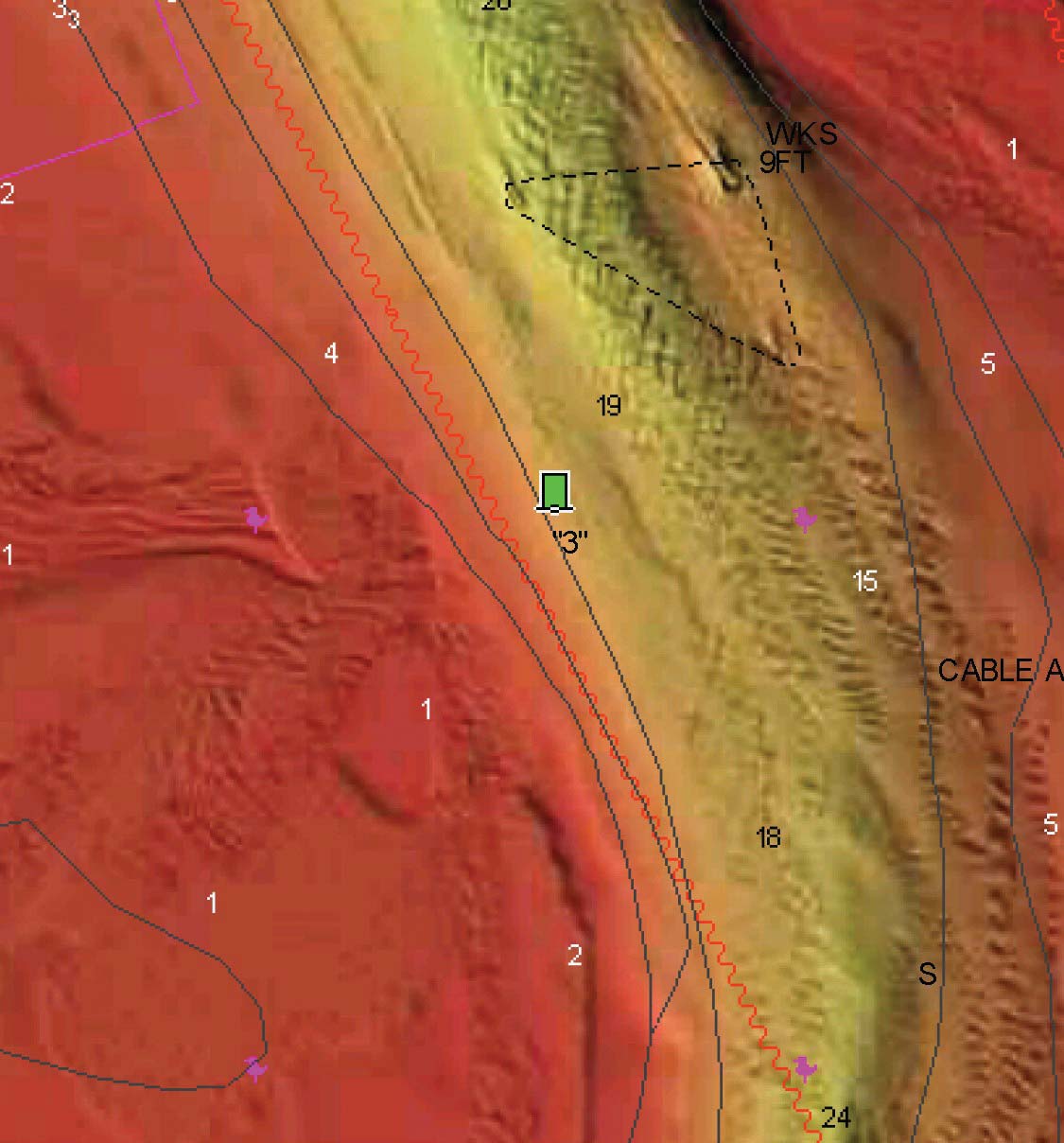
Fishing The Spring Pattern
Trip preparation and planning is important. Current can be an issue at times so plan your tides carefully and set conservative goals for distance based on the amount of time that you have on a given trip. Additionally, always study a nautical chart before the trip to see if you can find some likely holding areas before you go, especially if you are unfamiliar with a particular waterbody. This will potentially cut time from your search.
After you hit the fishing grounds and find a potentially good area, start speed trolling. In terms of speed, the faster the better and you should troll at least 3 mph when looking for bluefish. Often, I will push as fast as I can and get powerful hits from a big bluefish that turn the kayak to the side! After locating some bluefish while trolling, cast the area but don’t spend too much time if you aren’t catching. Specifically, limit yourself to approximately a dozen casts before moving along to find the motherload. Your retrieve should be moderately fast but still feel in control. Repeating this process for the rest of your outing gives you a good shot at getting into a very good bluefish bite.

